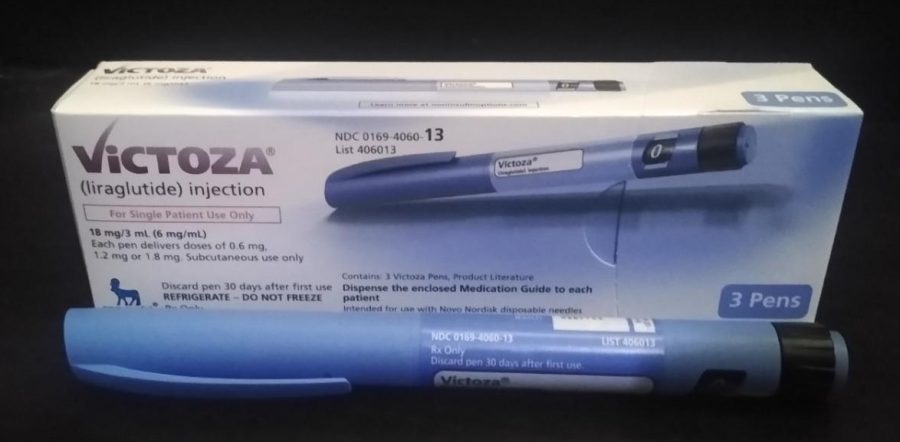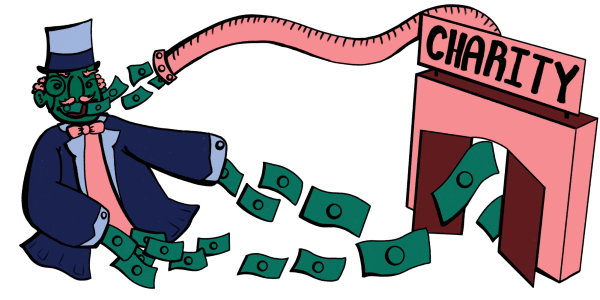Exorbitant Pharmaceuticals Prices
The Rise of Corporate Greed in Medicine
Medical Inflation: A Victoza Iiraglutide injection used to treat type 2 diabetes. The price of insulin, a related product, has nearly tripled in the past two decades. photo by JC Ramirez Delgadillo.
December 19, 2022
In 2006, an EpiPen was $54. In 2016, an EpiPen cost around $300, according to a report published by the Connecticut General Assembly. In just a decade, the price of this life-saving product that millions throughout the whole country use has multiplied about six times. Americans across the nation have become increasingly upset about rising healthcare and medicine pricing.
The cost of medications has increased so far that members of Mylan, the company that makes the EpiPen, have testified before Congress about the price of their product and its effect on consumers. According to a 2016 article from USA Today, Democrat Rep. Elijah Cummings from Maryland said, “[Mylan’s goal is] to get filthy rich at the expense of our constituents,” and Democratic Rep. Stephen Lynch from Massachusetts described the testimony as “disgraceful” and “disgusting.” EpiPen is just one example of many examples of pharmaceutical greed in recent years. This issue grows and becomes more widespread by the day, continuously limiting Americans’ access to potentially life-saving treatment and medicine that is needed to treat certain conditions.
Alongside EpiPens, the price of asthma inhalers has skyrocketed as well. An analysis done by GoodRx shows that between 2013 and 2018, prices soared almost 35%, from $280 to more than $380 in just a couple of years. Considering the fact that around 25 million Americans – about 1 in every 13 people – have asthma. Higher costs for inhalers could be extremely profitable for companies. Advair and Flovent are two of the leading manufacturers of asthma inhalers in the United States, and reports from GoodRx show that in the same time frame, the prices jumped 56% and 41% respectively, leading to a large price hike across the industry.
Predictably, this particularly affected those who have no insurance or who are underinsured. A report issued by the Centers for Disease Control and Prevention (CDC) found that in some states as many as 20% of people with asthma have to pay out of pocket for their inhalers because they do not have insurance. An article from GoodRX Health shows that oftentimes lower-income areas have higher rates of asthma and have lower numbers of people with insurance. These two factors only exacerbate the damage caused by extortionate prices.
According to the American Diabetes Association (ADA), around 8.4 million people in the U.S. use insulin as a major medication. An article from AP News shows that the price of the drug has nearly tripled in the past 20 years. If the drug is so needed for such a large amount of people, the question of why it is so expensive still remains. The answer to that is simply in how many manufacturers make it. There’s only three companies that produce insulin, allowing for a near monopoly on the life-saving medication. Eli Lilly, Novo Nordisk, and Sanofi are the puppet master pharmaceutical companies controlling the prices. Dr. Jing Lou of the University of Pittsburgh explains, “They’ve been historically raising their list prices for their respective products in lockstep with one another… There hasn’t been a lot of pricing pressure (AP News).” This has been problematic, as all three companies have raised their prices in tandem with no other smaller manufacturers available to sell EpiPens for less. Higher prices lead to those in need being cornered into spending insane amounts of money. Insulin is a life-saving drug, and having to choose between food, rent, and care that could keep you from death is not a decision any American should have to make.
Although not much can be done to alter the ways of individual companies, there have been attempts by the government to soothe the effects of the economy on prices for medicine. The Inflation Reduction Act was passed into law on Aug. 16, 2022. This act was set to lower prescription costs for all Americans including price caps, reductions, and allows the federal government to negotiate prices on the priciest drugs gradually over the course of ten years. According to the Kaiser Family Foundation, this act will let people with Medicare only have to pay a $35 monthly cost sharing for insulin beginning in 2023. According to NBC, the current cost for insulin can be $1,000 or more, so this would be a substantial development in making insulin more accessible. However, many fear that legal loopholes will soon be discovered by big pharmaceutical companies that will be utilized to undo progress being made. The wellbeing of millions of Americans is under attack, and if more legislation like the Inflation Reduction Act isn’t passed, the lives of these people could be entirely in the hands of a few select companies.












